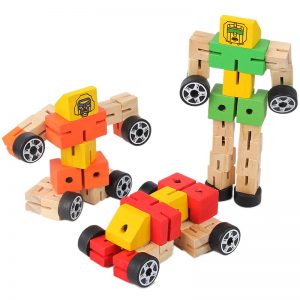Characteristics of wood
1. Naturalness: Wood is a kind of natural material. Among the four main materials commonly used by mankind, steel, wood, cement, and plastic, only it is directly taken from nature, which makes wood have low production costs, low energy consumption, non-toxic, and non-toxic. Pollution and other characteristics.
2. Good texture: wood has good tactile characteristics that are easily accepted, far superior to materials such as metal and glass.
3. High strength-to-weight ratio: The ratio of certain strength to weight of wood is higher than that of general metals, and it is a light and high-strength material.
4. Thermal insulation: The thermal conductivity of wood is very small. Compared with other materials, the thermal conductivity of aluminum is 2000 times that of it, and the thermal conductivity of plastic is 30 times that of it. Therefore, wood has good thermal insulation properties!
5. Electrical insulation: wood has poor point conductivity and is a good electrical insulation material.
6. Processability: The wood has moderate hardness and is easy to process.
7. Decorative: Wood itself has natural and beautiful patterns. As furniture and decorative materials, it has good decorative properties.
Advantages of wood
1. The wood is lighter and softer, and products with various shapes can be processed and supported with simple tools. The wood processing process consumes less energy and is an energy-saving material.
2. Wood is light and strong. The strength and density of wood is generally higher than that of metal.
3. The wood does not become brittle during this period of overload. Therefore, the wooden furniture adds some safety.
4. Wood (dry wood) has weak heat and electricity conductivity, small response to temperature changes, strong insulation, and insignificant thermal expansion and contraction. Therefore, wood is suitable for places with high requirements for thermal insulation and electrical insulation. Furniture made of wood can give people a comfortable feeling of warm in winter and cool in summer.
5. Although wood burns under high temperature conditions, large wooden structures deform less and slower than metal structures, and can still maintain a certain strength when gradually burned or carbonized, while metal structures will quickly deform and collapse due to high temperature creep.
6. The wood will not rust and is not easy to be corroded.
7. Wood is easy to connect or glue, which brings a lot of convenience to furniture making and interior decoration.
8. The wood color and pattern are beautiful, and it will be more pleasing to the eye after finishing rendering, suitable for making furniture, instrument boxes, handicrafts, etc.
9. It is relatively easy to carry out chemical treatment, which can change or improve the properties of wood, such as wood plasticization, wood preservation, insect control, and fire prevention treatment.
10. Wood defects are easier to find, which facilitates selection and removal during processing.
11. Timber is a renewable resource. If it can be managed reasonably, it can be inexhaustible and inexhaustible.
Disadvantages of wood:
1. Wood is a kind of hygroscopic material, so it will swell and shrink under natural conditions, which impresses that the dimensions of wood products are stable, that is, they are easily deformed.
2. Wood is an anisotropic, heterogeneous material, manifested in various physical and mechanical properties. The uneven expansion and contraction aggravates the deformation of the wood, and the difference in strength in all directions can easily cause the wood to crack.
3. Wood is flammable.
4. Wood has some unavoidable natural defects, such as knots, oblique grain, stress wood, etc.
5. The strength of wood is limited and its growth cycle is long.









